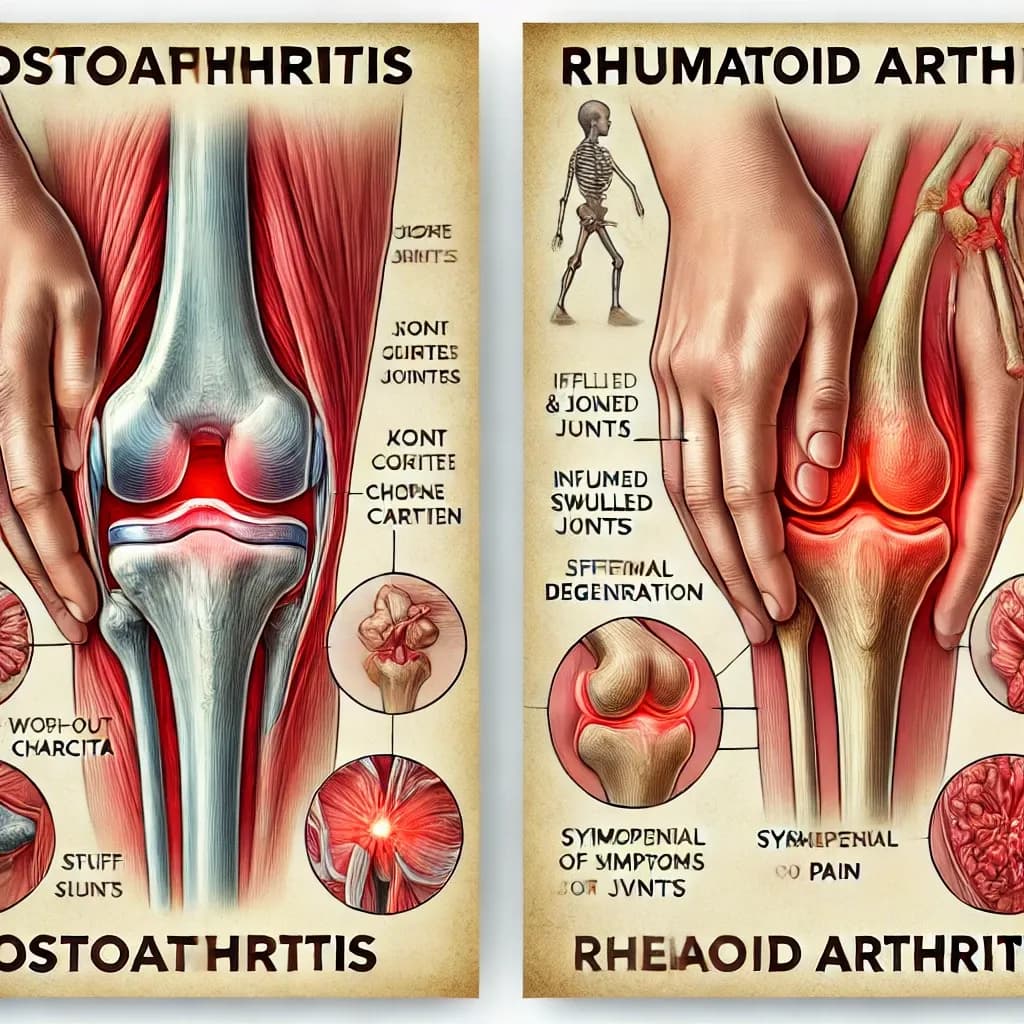Understanding Osteoarthritis: Key Facts, Differences, and Care Tips
Osteoarthritis (OA) is the most common type of arthritis, affecting millions of people worldwide. It happens when the cartilage in joints wears down over time, causing pain, stiffness, and difficulty moving. OA usually affects weight-bearing joints like the knees, hips, spine, and hands.

Symptoms of Osteoarthritis
Symptoms of OA develop slowly and get worse over time. Common signs include:
- Joint pain during or after movement.
- Stiffness, especially after resting or sitting still.
- Reduced flexibility or range of motion.
- Swelling and tenderness around the joint.
- A grating or cracking sound during movement.
Osteoarthritis vs. Rheumatoid Arthritis
While both OA and Rheumatoid Arthritis (RA) affect joints, they are very different:
- Cause: OA is caused by wear and tear on joints. RA is an autoimmune disease where the immune system attacks joint linings.
- Onset: OA develops slowly, often with age or from repeated joint stress. RA can happen at any age and may start suddenly.
- Symptoms: OA affects specific joints and worsens with activity. RA causes fatigue, fever, and pain in the same joints on both sides of the body.
- Inflammation: RA involves significant joint inflammation. OA has mild inflammation limited to affected joints.
Risk Factors for Osteoarthritis
Some factors that increase the risk of OA include:
- Age: Risk increases as you get older.
- Gender: Women are more likely to develop OA, especially after menopause.
- Obesity: Extra weight adds stress to joints like knees and hips.
- Joint Injuries: Previous injuries make joints more vulnerable.
- Genetics: A family history of OA increases your risk.
Treatment for Osteoarthritis
There is no cure for OA, but treatments can relieve symptoms and improve joint function:
1. Lifestyle Changes:
- Do low-impact exercises like walking or swimming to strengthen muscles and improve flexibility.
- Lose weight to reduce stress on your joints.
2. Medications:
- Use over-the-counter pain relievers like acetaminophen or NSAIDs to ease pain and inflammation.
- In severe cases, doctors may recommend corticosteroid injections.
3. Physical Therapy:
- A physical therapist can create a custom exercise plan to strengthen your joints and improve mobility.
4. Assistive Devices:
- Braces, orthotics, or canes can support your joints and reduce strain.
5. Surgery:
- For advanced cases, joint replacement surgery (like knee or hip replacements) can help restore mobility and reduce pain.
How to Prevent Osteoarthritis
You can’t fully prevent OA, but these tips can lower your risk:
- Keep a healthy weight.
- Stay active with exercises that don’t strain your joints.
- Protect your joints by avoiding repetitive stress or injuries.

